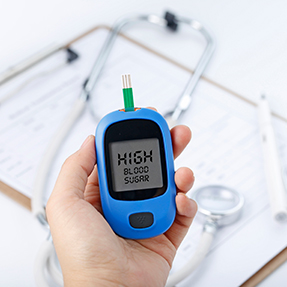
Move after meals: The best habit for better blood glucose control
One of the best ways to gain control over fluctuating blood glucose levels and to stave off type 2 diabetes, is to take a post-meal walk after meals. It’s known that exercise of any kind is good for overall health. But studies have found that movement after a meal particularly benefits metabolic health, especially if done within 30 minutes after eating.
In case you’re not sure what metabolic health is, this is how well your body uses energy at the cellular level. Metabolically healthy people tend to have more energy, burn more fat, have healthy body weight, and better cognitive functioning. Another indicator of metabolic health is your body’s ability to efficiently process glucose or sugar in your bloodstream that comes from foods containing carbohydrates. Carbohydrates break down into the sugar called glucose, raising blood glucose levels. Maintaining stable glucose levels is beneficial for avoiding low blood sugar or a post-meal energy crash as well as beneficial long-term for avoiding chronic disease such as chronic kidney disease or type 2 diabetes.
One way helping with this process is to avoid highly refined carbohydrates such as sugary beverages, cookies, candy, chips, cakes, etc. That’s why exercising after a meal is perfect for helping muscles use up excess glucose circulating in the bloodstream as energy. Studies have shown that taking a simple walk after eating a meal helps blunt the immediate glucose spike after the meal. When circulating blood glucose remains elevated in the bloodstream long-term, this leads to various complications of type 2 diabetes. These complications can include blindness, heart disease, kidney disease, neuropathy, and poor circulation.
Besides walking, other forms of physical activity after meals for helping control blood glucose include the following:
- Climb up stairs
- Put on music and dance
- Cycle on a stationary bike
- Walk your dog
- Hike a nature trail
- Do jumping jacks or jump rope
How soon after eating a meal is best for exercise?
Everyone is different so what may be right for one person, may not be right for someone else. Generally, it’s ideal if you start physical activity about 30 minutes after the beginning of a meal. Glucose levels tend to peak about 90 minutes after a meal.
It is recommended to test your blood glucose before exercising after a meal. If you already struggle to manage your blood sugar within a healthy range, your blood sugar may increase if you exercise within half an hour after eating, making it possibly dangerous. In this case it’s best to wait a little longer until your blood sugar is coming down.
Here are the ranges of blood glucose that are considered safe for exercising after a meal:
- If you test before exercising, a healthy range is considered between 150 and 180 mg/dl
- If you test before exercising and your blood glucose is 140 mg/dl or less and you use insulin, eat 15 grams of a carbohydrate prior to moving preventing too large of a drop in your blood glucose.
- If you test before exercise and your blood glucose is 300 mg/dl or higher, postpone physical activity for 30 minutes until this number begins coming down.
- Anyone using insulin must always check blood glucose before exercising.
What this means for you
Whenever possible, get moving about 30 minutes after eating a meal. This helps curb a spike in blood glucose and instead mobilizes post-meal glucose for fueling physical activity.
Here are healthy post-meal habits everyone should, whether they have diabetes or not:
- Ideally take a moderate to brisk walk within 30 to 60 minutes after a meal, walking up to 30 minutes
- If you find it hard to fit in 30 minutes during your day, try walking briskly in place or in your office or home for 100 seconds every 30 minutes throughout the day. This can have significant health benefits on daily glucose and insulin levels.
- To prevent forgetting to move, set a timer every 30 minutes reminding you to move briskly for 100 seconds.
- Choosing to regularly move after eating instead of sitting down for hours at your desk or easy chair, builds habits supporting your metabolic health for now and in the future.
Dr. David Samadi is the Director of Men’s Health and Urologic Oncology at St. Francis Hospital in Long Island. He’s a renowned and highly successful board certified Urologic Oncologist Expert and Robotic Surgeon in New York City, regarded as one of the leading prostate surgeons in the U.S., with a vast expertise in prostate cancer treatment and Robotic-Assisted Laparoscopic Prostatectomy. Dr. Samadi is a medical contributor to NewsMax TV and is also the author of The Ultimate MANual, Dr. Samadi’s Guide to Men’s Health and Wellness, available online both on Amazon and Barnes & Noble. Visit Dr. Samadi’s websites at robotic oncology and prostate cancer 911.
